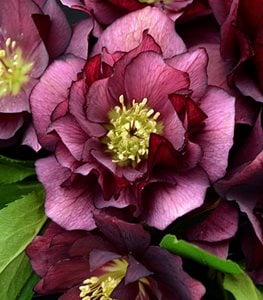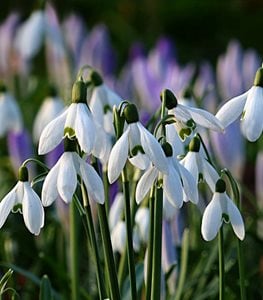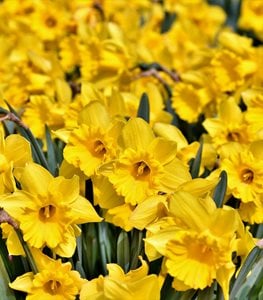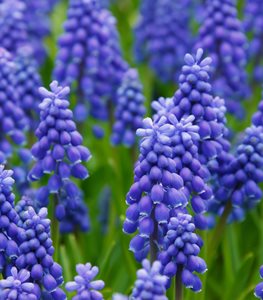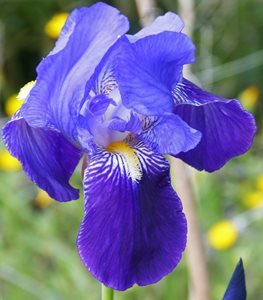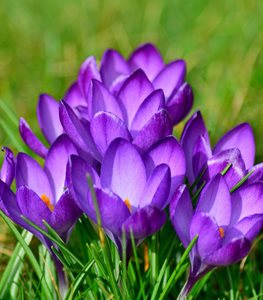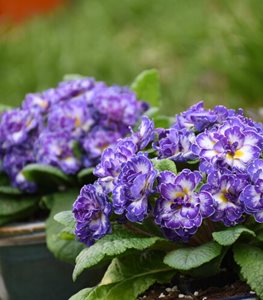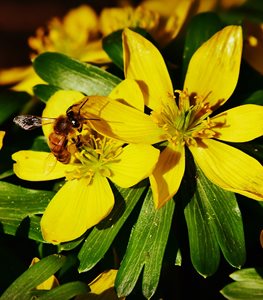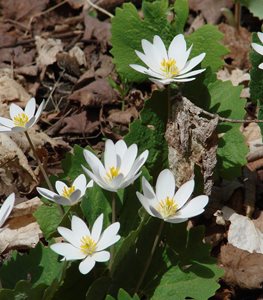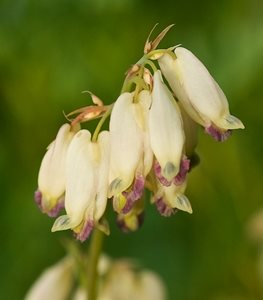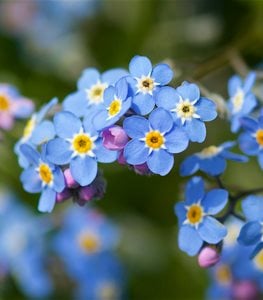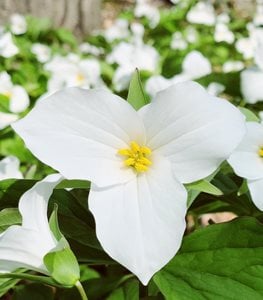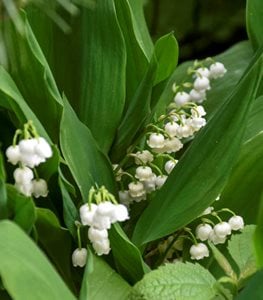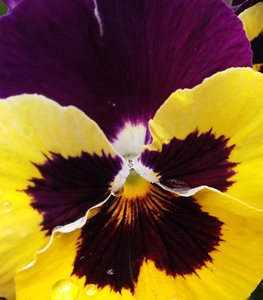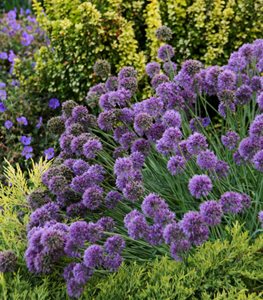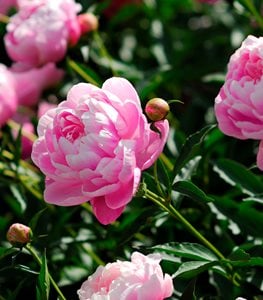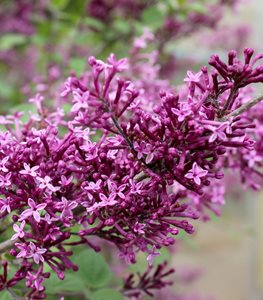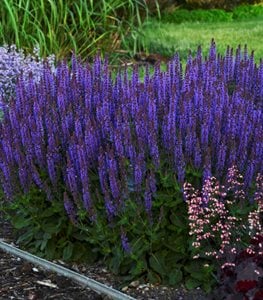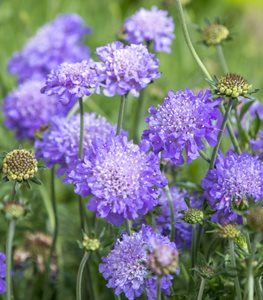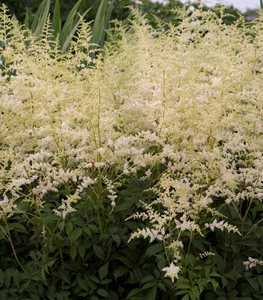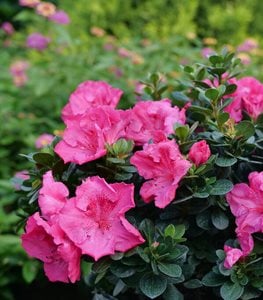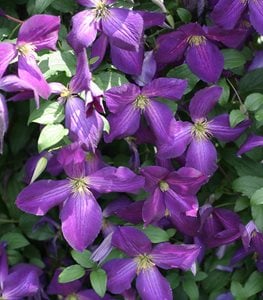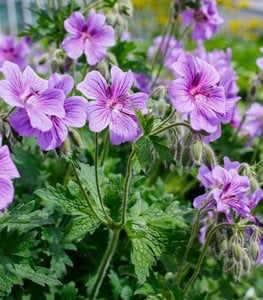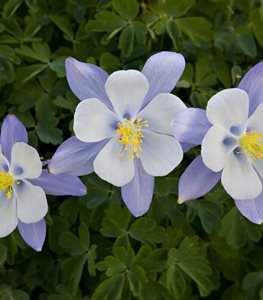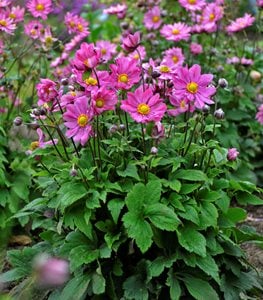26 Popular Spring Flowers for Your Garden
The best flowering plants for early- to late-spring colorThe spectacle put on by flowering bulbs and perennials each spring is one of Mother Nature’s best performances. She keeps them hidden under a blanket of snow-covered soil until the lengthening days and warming sun signal that it’s time for their grand entrance. Right on cue, they rise out of their beds to banish our winter blues and remind us that spring has arrived. By planting a wide variety of spring flowers, you can enjoy this glorious display from late February through mid-June. Here are some of the top performers for season-long color.
On this page: Early to Mid-Spring | Late Spring to Early Summer
On this page:
EARLY TO MID-SPRING
HELLEBORE
Helleborus x hybridus
Zones: 4-9
Exposure: Partial shade
Also known as Lenten rose, this spring flower comes in many colors and can really brighten up shady locations. Hellebores bloom early in the season with flowers lasting two months or longer. Hellebores grow best in an area protected from extreme conditions, such as extreme cold or full sunlight.
Learn more about growing hellebores.
SNOWDROP
Galanthus
Zones: 3-9, depending on the variety
Exposure: Full sun to partial shade
Snowdrops prefer cooler climates and light shade and defy the cold by pushing their white flowers up through a blanket of snow. Their short stature makes them the perfect choice for woodland or rock gardens and borders. For the best massing effect, plant snowdrops in clusters of at least 25 bulbs, spacing them about 3 inches apart.
Read more about growing and caring for snowdrops.
DAFFODIL
Narcissus
Zones: 3-9
Exposure: Full sun to partial shade
A dependable and easy flower to grow, daffodils require very little care and are a great choice for beginning gardeners. Their trumpet-shaped flowers are typically yellow or white and they grow best in full sun or light shade. For best results, plant in masses in a perennial garden, or let them naturalize in a woodland garden.
Learn more about growing daffodils.
GRAPE HYACINTH
Muscari
Zones: 3-9
Exposure: Full sun to partial shade
The deep violet flowers of grape hyacinth bloom in early spring and last as long as three weeks. Their bell-shaped flowers resemble upright clusters of miniature grapes. They grow best in full sun or partial shade and are easy to care for. They will naturalize and spread through an area, though not aggressively.
Read more about how to grow grape hyacinth.
BEARDED IRIS
Iris germanica
Zones: 3-9
Exposure: Full sun
Bearded iris come in a range colors, heights, and bloom times. The shortest varieties bloom as early as mid-March, with taller irises blooming from mid-May to June; some even re-bloom in summer or fall. For best results, plant bearded iris between July and September, while they are dormant.
Learn more about growing iris.
DUTCH CROCUS
Crocus vernus
Zones: 3-8
Exposure: Full sun to partial shade
Dutch crocus flowers bloom in early spring and flowers last for about three weeks. Flowers close at night and open up in the morning. Plants perform best in gritty, well-drained soils. Mass in lawns, under trees or in sunny woodland areas.
Learn more about growing crocus flowers.
PRIMROSE
Primula
Zones: 4-8
Exposure: Partial shade
Blooming in early spring, primrose comes in many vibrant colors. They prefer rich, well-drained soil, regular water, partial sun to deep shade, and perform best in cooler climates. Primrose combine well and can be naturalized in a woodland setting or use as an accent in a mixed border or container.
Learn more about growing primrose flowers.
WINTER ACONITE
Eranthis hyemalis
Zones: 3-7
Exposure: Full sun to partial shade
Winter aconite is a late winter to early spring bloomer with cup-shaped, upward facing, bright yellow, flowers. These plants will often push their flowers up through the snow. They enjoy full sun at the time of blooming and then the increasing shade as trees leaf out overhead.
BLOODROOT
Sanguinaria canadensis
Zones: 3-8
Exposure: Partial to full shade
Bloodroot is a stemless wildflower that blooms in early spring. The flowers are short lived (1-2 days), and open in the sun and close at night. Bloodroot is best when planted in mass in shaded areas of woodland, wildflower, native plant or rock gardens where plants can be allowed to naturalize.
BLEEDING HEART
Dicentra
Zones: 3-9
Exposure: Partial sun
Bleeding heart bears white, pink, or red heart-shaped flowers on arching stems above fern-like leaves. Plant these alongside bold-leafed plants that will grow up and cover the dying foliage. They grow best in rich, well-draining soil with regular moisture.
Learn more about how to grow bleeding heart plants.
FORGET-ME-NOT
Myosotis sylvatica
Zones: 3-9, depending on the species
Exposure: Full sun to partial shade
Forget-me-not, is a hairy, tufted, spring-flowering plant. They are easily grown in organically rich, consistently moist, well-drained soils. Plant where they can naturalize, as they spread aggressively.
TRILLIUM
Trillium
Zones: 3-9, depending on the species
Exposure: Partial sun
Trilliums feature three leaves in a spiral pattern with a single flower. Blossom colors sometimes appear yellowish bronze or reddish-green. Flowers often have a sweet but faint fragrance. The blooms give way to berry-like capsules and seeds are disbursed by ants.
Read more about growing trillium flowers.
LILY-OF-THE-VALLEY
Convallaria majalis
Zones: 2-7
Exposure: Partial sun to shade
Lily-of-the-valley blooms dainty bell-shaped flowers in the spring and have a heavenly fragrance. The lance-shaped leaves last all summer, serving as an attractive groundcover. This shade-loving plant isn’t fussy about soil, but will spread aggressively, so avoid placing it near perennial gardens or borders.
See more about growing lily-of-the-valley plants.
PANSY
Viola x wittrockiana
Zones: 6-10
Exposure: Full sun to partial shade
Popular bedding plants for cool weather, pansies come in a wide variety of colors often with contrasting markings in the center. Pansies are usually grown as annuals or biennials. The plants will inevitably succumb to the summer heat, at which point they should be removed from the garden.
Learn more about growing pansies.
LATE SPRING TO EARLY SUMMER
FLOWERING ONION
Allium
Zones: 3-8, depending on variety
Exposure: Full sun to partial shade
Blooming in late spring, the spherical blooms of alliums are striking in any garden, and their scent helps keep unwanted pests away. They don’t need much space to grow and are great among any annual or perennial garden. Alliums grow best in full sun and well-drained soil. Allow the foliage to die back naturally before removing it. Divide them if they become overcrowded, and replant the bulbs in the fall.
Learn more about growing flowering onion plants.
PEONY
Paeonia
Zones: 2-8, depending on species
Exposure: Full sun to partial shade
This classic spring favorite is grown for its large showy blooms that come in a range of colors. Plants come in bush or tree form, with single or double fragrant flowers that are good for fresh bouquets.
Learn more about how to grow peonies.
LILAC
Syringa
Zones: Most are hardy in Zones 3-8, with a few hardy to Zone 2 or Zone 9.
Exposure: Full sun
An old-time standard of homesteads and cottage-style gardens, the small fragrant flower panicles of lilac occur in clusters, with shades of white, purple, pink, blue, or yellow. This reliable shrub is exceptionally hardy, low maintenance, and long-lived.
Learn more about how to grow lilacs.
SALVIA
Salvia
Zones: 4-9, depending on the species
Exposure: Full sun to partial shade
Salvia is a large genus of annuals and perennials that includes varieties that bloom in mid to late spring. This mint relative produces aromatic foliage and long-lasting flowers that come in a range of colors and shapes. Plants are easy-care, drought tolerant, and low maintenance.
Learn more about how to grow salvia plants.
PIN CUSHION FLOWER
Scabiosa
Zones: 3-11, depending on the species
Exposure: Full sun
Frilly pincushion-like flowers bloom on compact plants from late spring through summer in shades of pink, white, blue, lavender or chocolate. Grow this reliable perennial in borders, rock gardens or massed in the landscape.
Learn more about how to grow pin cushion flowers.
ASTILBE
Astilbe
Zones: 3-9, depending on the species
Exposure: Partial to full shade
Stately flower plumes add elegance to woodland borders and shade gardens. This water lover thrives along streams or ponds. Combine with ferns, bleeding heart, and columbine for elegant springtime color.
Learn more about how to grow astilbe.
AZALEA
Rhododendron
Zones: 3-9, depending on the species
Exposure: Partial to full shade
Closely related to rhododendrons, these versatile deciduous or evergreen shrubs are useful in foundation plantings, as hedging, in mixed borders, or massed in the landscape. Trumpet-shaped flowers come in a wide range of colors.
Learn more about how to grow azaleas.
CLEMATIS
Rhododendron
Zones: 4-9, depending on the species, with a few suitable for Zone 3 or 10
Exposure: Full sun to partial shade
One of the most popular flowering vines, clematis produces flowers in a wide range of colors, shapes and sizes. Use these vigorous deciduous or evergreen climbers to cover arbors, trellises, fences, or walls.
Learn more about how to grow clematis vines.
CRANESBILL
Geranium
Zones: 3-9, depending on the species
Exposure: Full sun to partial shade
Not to be confused with annual geranium (Pelargonium spp.), this tough long-blooming perennial is a favorite companion for rose bushes. Use in mixed borders, as a groundcover, or massed in the landscape. Open flowers occur in shades of pink, purple, white, or blue.
Learn more about how to grow cranesbill geraniums.
TULIP
Tulipa
Zones: 3-8, depending on the species
Exposure: Full sun
One of the most beloved spring flowering bulbs, tulips occur in nearly every color except blue. Plant this versatile spring bloomer in beds, borders, containers, rock gardens, or massed in the landscape.
Learn more about how to grow tulips.
COLUMBINE
Aquilegea
Zones: 3-9, depending on the species
Exposure: Full sun to partial shade
Native to mountainous regions throughout the Northern Hemisphere, this charming perennial produces bonnet-shaped nodding flowers in colors of pink, blue, purple, white, yellow, chocolate, red, or peach. Add color to woodland gardens, mixed borders, or rock gardens.
ANEMONE
Anemone
Zones: 3-9, depending on the species
Exposure: Full sun to partial shade
Charming daisy or poppy-like flowers occur in colors of pink, white, blue, red, pink, or purple. Use these groundcover or upright plants in woodland borders, mixed plantings, containers, rockeries, or massed as an underplanting.
Learn more about how to grow tulips.
RELATED:
20 Flowers for Your Summer Garden
Container Gardens Made for the Shade
Shade Garden Pictures
